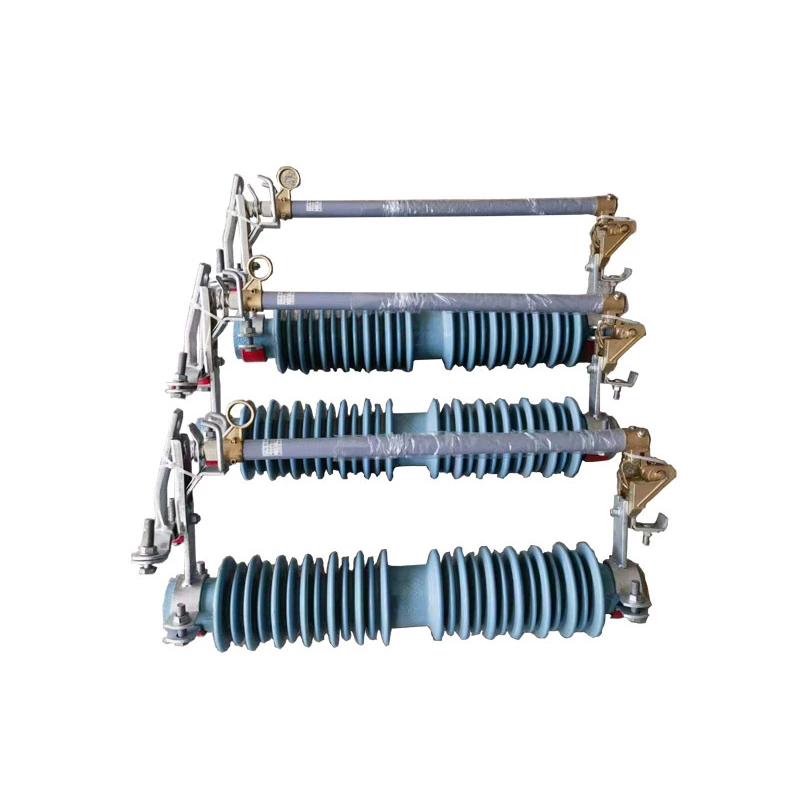Standardized Operating Technical Specifications For Drop-out Fuses
The correct operation of High Voltage Fuse is directly related to the safety of power system operation and personnel protection. This article systematically explains the standardized operation process and technical points of the equipment based on GB/T 15166.4-2020 standard and combined with on-site operation and maintenance experience.
1. Safety preparation before operation
Operators must wear a full set of Class II insulation protection equipment (voltage rating ≥ 18kV) and use a qualified 10kV insulating operating rod (effective insulation length ≥ 0.7m). A double-layer warning isolation area must be set up on site, with a radius of no less than 1.5 times the installation height of the fuse (typical value 4.5-6m). Use a clamp ammeter to confirm that the line load current is less than 30% of the fuse rating, and check that the grounding resistance of adjacent equipment is ≤4Ω.
Environmental assessment should meet the following conditions: wind speed <8m/s, relative humidity <85%, no condensation. Before operation, remove ice or salt mist crystals from the fuse surface, and ensure that the creepage distance of the shed is ≥350mm. Check that the angle between the axis of the fuse tube and the vertical plane is maintained at 60±2°, and the contact pressure of the contact needs to be verified by a spring balance in the range of 120-150N.
2. Standardized operating procedures
... Immediately after the operation, use an infrared thermometer to detect the temperature rise of the contacts, and the allowable value is ≤55K (ambient temperature reference).
The power-off operation adopts graded arc control technology: in the initial stage of the opening, pull the gap to 10-15mm at a speed of 0.5m/s, maintain 0.5 seconds until the arc is transferred to the arc extinguishing chamber, and quickly complete the remaining stroke. The operating rod needs to maintain axial tension until the fuse tube falls completely, and confirm that the distance between the moving and static contacts is >200mm. It is strictly forbidden to operate with load. When the capacitive current is detected to be >0.5A, a special bypass switch should be used instead.
The fuse replacement operation implements the "three-check" system: check the rated current of the fuse and the load matching coefficient (K≥1.5), check the consistency of the batch number of the fuse tube, and check the preload of the melt (measured by a tensiometer, the standard value is 80-100N). When installing a new fuse, mechanical stress must be eliminated, and the winding direction must be consistent with the spiral groove direction of the arc extinguishing chamber.
3. Special working conditions handling specifications
Nighttime operation requires an explosion-proof lighting system with more than 3,000 lumens and an illumination uniformity of >0.7. When replacing the fuse tube under power, the operator must be on the upwind side of the fuse and use a repulsive contact system to maintain a safety distance of 1.2 times. When operating in icy and snowy weather, an anti-icing flash cover should be installed on the insulating rod, and the operating speed should be reduced to 60% of the normal working conditions.
Removal of the faulty fuse requires residual energy release: Use a grounding rod to touch the fuse shell at multiple points until the leakage current is less than 0.1mA. During disassembly inspection, focus on the carbonization depth of the arc extinguishing chamber (allowable value <1mm) and the residual deformation of the spring sheet (threshold <15%). If the fuse is stuck during operation, it is strictly forbidden to pull it forcibly, and a special tube puller should be used for mechanical disconnection.
... Operators must pass simulated operation assessment every year, including 8kV power frequency withstand voltage test, accurate positioning of the operating ring within 0.2 seconds, emergency response to abnormal working conditions, etc. Tool management implements the "three inspections and three calibrations" system: inspect the integrity of the insulation layer before operation, check the mechanical strength during operation, and check the wear status after operation.

